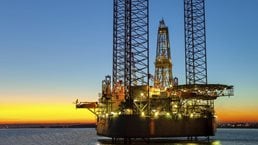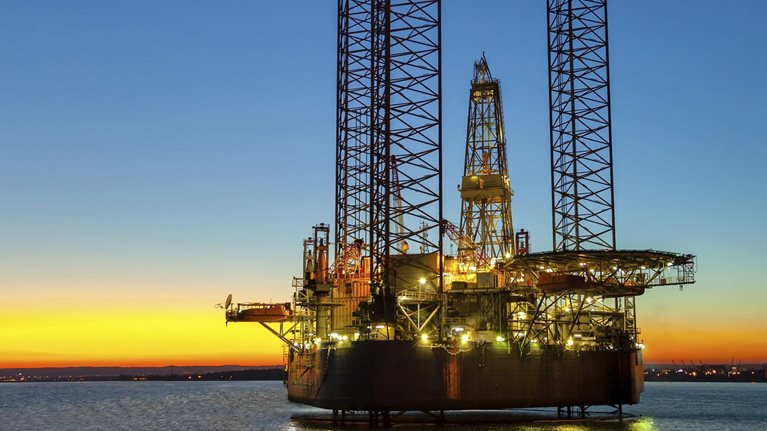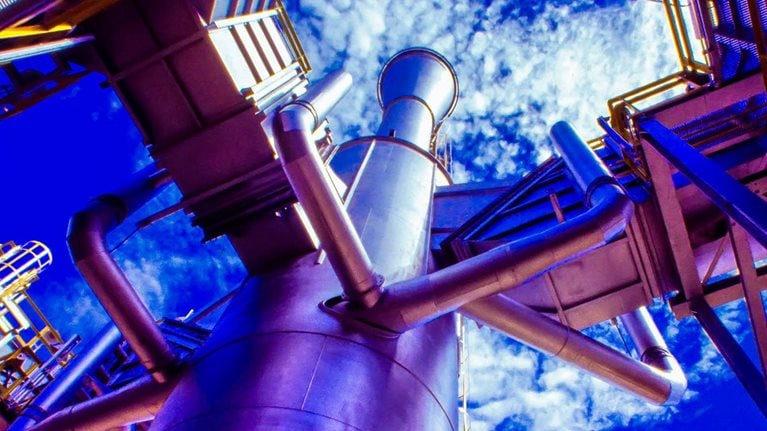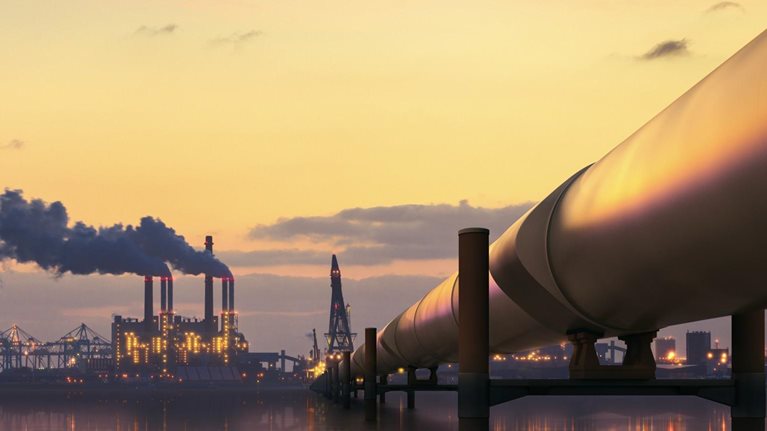Quarterly perspective on oil field services and equipment: May 2016
The first quarter 2016 proved to be the toughest so far in the prolonged downturn for the oil and gas industry. As expected, Operator capex fell sharply, taking Oil Field Services & Equipment (OFSE) sector revenues with it. Margins also fell as companies downsized to fit the smaller market, with companies wrestling to establish greater control over costs.
Crude hit a low in January, but provided some encouragement as it rose later in the quarter, helping slow the rate of rig-count decline, and providing some indication that the market may have reached bottom. However, it is telling that despite the near 80 percent increase in the oil price since the depths of January, there is no tangible increase in activity levels. OFSE share values had moved down in line with revenue, but the recent firming of crude has encouraged speculative buying, causing stock performance to outpace that of OFSE sector metrics, as investors seek to position themselves for a further possible rise in crude.
OFSE sector revenue fell by 30 percent versus Q1 2015, its lowest levels since 2008. The size of the fall was, however, a slight improvement compared to the Q4 quarterly comparison, which showed a 36 percent drop year-on‑year. Quarter on quarter comparison showed an overall Q1 revenue decline of 9.6 percent, a slight deterioration from 10.8 percent in the fourth quarter. These revenue falls correlate closely with seasonally adjusted capex cuts, which are expected to continue—the latest 2016 E&P spending surveys indicate capex in 2016 to be 25 percent below 2015, corresponding to a fall of 40-to-50 percent in North America and around 20 percent in international markets.
A major event in the OFSE market was the collapse of Halliburton’s $38 billion takeover of Baker Hughes, which ran into trouble from a US Department of Justice lawsuit, objections in Europe and complaints from within the industry. Halliburton took a hit with a $3.5 billion break-off fee, but Baker Hughes paid a hefty price as well driven by customer and strategic uncertainty. Both companies’ shares fell in the wake of the decision, but Halliburton by less than Baker Hughes. With oil prices stabilizing, however, more consolidation is anticipated, and this was underlined by news of Technip’s merger with FMC as this report went to press.
In the Middle East, continued drilling is driving activity, which remains robust compared to other regions, as OPEC continues to preserve market share. Halliburton expects mature fields in the region to be the first part of the business to “tighten back up,” followed by mature fields in Asia.
Key trends
Oil prices rebounded in the first quarter from lows in January, although the forward curve shallowed further (Exhibit 1)
Oil prices have recovered from their lows of around $25/barrel in January, with Brent rising from $33.0/barrel in February to an average $47.1/barrel in May. Further forward, the curve flattened once again, and by a greater amount than seen in the third or fourth quarters last year, reflecting increasingly weak sentiment over a longer time frame. While front month Brent gained $14.1/barrel, 2020 prices rose only $8.2/barrel to reach $57.4/barrel—a premium of only $10.3/barrel to front month, compared to $15.5/barrel last quarter.

Some support for prices came from a lower anticipated future non-OPEC production outlook, as investment in new production and maintaining fields has been hit hard by spending cuts. Non-OPEC production fell by 930,000 barrels/day over the course of Q1, with about 50 percent of this in North America. New oil and gas finds in 2015 sank to their lowest level since 1952, increasing longer term reliance on OPEC. Despite this, market expectations for future price were tempered as the implications of the dramatic cost reductions—especially in the US onshore sector—continue to filter through.
Would you like to learn more about our Oil & Gas Practice?
On the oil demand side, total daily demand rose to 1.4 million barrels in Q1, according to the IEA—200,000 barrels/day above its forecast. Growth came from the US gasoline market, which jumped to 9.2 million barrels/day in February, up 556,000 barrels/day—the biggest annual increase since May 1978. “Global gasoline demand remains relatively strong,” said Exxon Mobil Corp.
Nevertheless, rising crude output from Iran and Iraq, and signs that Saudi Arabia may move to once again defend market share this summer, along with bulging worldwide stock levels and fast expanding renewable sectors, capped any recovery in sentiment generally.
Capital expenditure—downward trend accelerates in Q1 (Exhibit 2)
Operator capex in Q1 fell to about $60 billion, with the yearly moving average slipping to –31 percent, compared to about –27 percent in Q4, when capex is traditionally firmer for seasonal reasons, including NOCs spending the remainder of annual budgets. The biggest cuts were again in the North American market, although this region is also expected to have the quickest recovery as prices rise.

Global spending reductions in 2016 are now expected to reach 25 percent, according to the latest global E&P surveys, compared to our earlier Q1 expectations of 15–20 percent for the year.
Schlumberger noted that the magnitude of the E&P investment cuts was now so severe that they could only accelerate the production decline and consequent upward movement in oil prices.
Rig count—rate of decline begins to slow (Exhibit 2)
The onshore rig count fell again, but by less than in the fourth quarter 2015—unsurprising given the small number of rigs still operating. The US land rig count declined by 35 percent, reducing numbers to just over 400 by the end of the quarter, representing a drop of 75 percent from the peak of October 2014.
In its Q1 earnings call, Halliburton’s Mr. Lesar said he believed the rig count would bottom in Q2. “We do think that potentially we’ll see an upswing in the rig count in the back half of the year.”
Offshore rigs too showed a significant slowing in the rate of decline. Europe, CIS, Latin America, and Africa were worst hit, while the Middle East and Asia were less affected.
Recent OFSE market performance
Overall OFSE revenue fell 30.3 percent year on year with all sectors contributing to the decline (Exhibit 3). Services fell 41.1 percent on the year, compared to 44.3 percent in the fourth quarter, indicating a slight slowing of market contraction. But the fall in asset revenue accelerated, contracting 35.3 percent, compared to 30.7 in Q4. As predicted, services appear to have bottomed out first due to the shorter term nature of contracts and a greater price sensitivity.

Overall, revenues were down 9.5 percent on the quarter, compared to 10.8 percent in Q4, with all OFSE sectors contributing except EPC, which showed a notable 7.7 percent increase compared to Q4.
Apart from EPC providers, OFSE companies struggled to maintain margins (Exhibit 4), as operators entered a third stage of cost savings, which proved more difficult to absorb than the initial rounds. Both equipment and services EBITDA margins fell markedly again. Asset margins fell slightly, edging down 10.5 percent on the year—eroding the counter-cyclical rises seen in the first half of 2015.

Efforts on the part of some companies to capitalize on new technology and business strategies has gained ground. The ability to invest through this unprecedented downturn is leaving some companies stronger relative to competitors and well positioned to capitalize on any upturn.
Services: Oil field services companies saw Q1 2016 revenues decline 41.1 percent compared to Q1 2015, and 18.5 percent on Q4—more than double the 9.4 percent fall between Q3 and Q4. Margins are down by 3.8 percent on the year and 1.6 percent compared to Q4, after holding up well earlier in 2015 as service companies quickly cut costs.
Schlumberger’s CEO, Paal Kibsgaard—whose company closed its technology driven acquisition of Cameron on April 1, 2016—summed up the situation in his Q1 earnings call: “Activity fell sharply in the first quarter, as the industry displayed clear signs of facing a full-scale cash crisis. We experienced activity reductions worldwide, with the rate of disruption reaching unprecedented levels.” Nevertheless, services were the best performing OFSE category on the stock market, with investors losing only about 17 percent since late 2014 (Exhibit 5).

Equipment: Equipment companies saw Q1 2016 revenues decline by 36.9 percent from Q1 2015, little changed on the rate of decline seen in Q4 2015, while the quarterly decline accelerated to 15.1 percent. Margins deteriorated much more quickly than in Q4, falling 7.9 percent on the year, and 1.6 percent on the quarter, as order backlogs dried up and lower rates were agreed. This makes equipment the poorest performing sector of the quarter, with EBITDA margins now at about 8 percent, down from around 16 percent in Q1 2015. The high fixed cost base of equipment manufacturers has prevented them from reducing their costs in proportions similar to the services companies.
Assets: Q1 2016 revenue for this group fell 35.3 percent from Q1 2015, a bigger fall than the previous quarter’s 30.7 percent. Revenues declined sequentially by 13.9 percent, roughly double the quarterly falls in Q3 and Q4 2015, making the quarter by far the worst performing yet for revenue. However, margins performed less badly, edging down by 0.5 percent compared to Q1 2015, and also 0.5 percent compared to Q4, after a fall of 4.0 percent in Q4 compared to Q3.
While margins are holding up at around 37 percent, still above the levels of late 2014, returns to shareholders since late 2014 from the asset category remain the worst OFSE performers, losing about 40 percent (Exhibit 5).
EPC: EPC companies were the best OFSE performers in Q1 2016, with revenue declining by 6.2 percent, or under a third of the rate seen in Q4. Revenue compared to Q4 rose 7.7 percent—the first truly positive statistic so far in this downturn, but not in itself sufficient for any celebration. Much of the revenue growth was achieved through diversification into other sectors like refining, (petrochemicals), renewables, and general industrials. The revenue gain allowed EBITDA margins to rise about 1.2 percent on the year and 0.8 percent on Q4, after falling 1.1 percent between Q3 and Q4 2015.
Downturn in offshore rig market hits shipyards
As the industry struggles with overcapacity and low rates, companies have been pushing back rig and other asset delivery schedules or canceling orders outright, a trend likely to continue for the rest of this year.

Margins under pressure as market falls further
Canceled rig orders have already pushed South Korea’s big three shipbuilders into the red, undermining share values. The troubles are now spreading to their rivals in Japan, China, and Singapore. “Nobody is ordering new rigs,” said Lee Yue Jer, a Singapore-based analyst at RHB Securities in February. “We’re still at the worst” point of the cycle.
Generally yards are proving flexible to requests from rig-owners to delay deliveries to dates when contract opportunities are more likely, hoping to avoid cancellations or failure to pay in the current cash-strapped environment. The market is so heavily oversupplied, some observers believe that as much as 30 to 50 percent of the backlog in orders for the Singaporean yards may ultimately be canceled.
Orders are even more at risk in China—which overtook long-time market leaders South Korea and Singapore in 2014 in terms of new deals—because many Chinese contracts have limited recourse, meaning the buyer faces little or no penalty if it decides to delay or cancel. If the yards are stuck with unwanted rigs they would face an inevitable discount if they attempted to sell on the open market given current conditions, leading to major losses.
Sales from bankrupt rig owners are making the situation worse, and give an indication of the discounts shipyards could expect. The ex-Schahin ultra-deepwater drillship Cerrado, for example, was auctioned to the only bidder, Ocean Rig, at the reserve price of $65 million in May—it cost $678 million to build. Many deepwater projects have also been canceled or postponed, while operators have achieved a fall in day-rates from highs of $640,000 to $190,000 to $250,000.
M&A, bankruptcies, and capacity reductions
Despite expectations of rising M&A, the market remains subdued with only $18 billion of upstream oil and gas deals done in the first quarter—the lowest quarterly figure for eight years. In the case of OFSE, Q1 deals were valued at $1 billion, about the same level as Q1 2015, but below previous Q1s, and down from $3 billion in Q4 2015, according to Derrick Petroleum.
But with capex falling sharply, a rising number of assets on the market and funds available, a further wave of consolidation is expected, with smaller OFSE companies thought to be most exposed, although there remains an overcapacity of assets in many service categories, particularly North America land rigs and pressure pumping. In the wake of its failed merger, Halliburton, for one, said it expected to carry out a rash of smaller acquisitions to improve its offering in specific areas, while news just in of Technip’s merger with rival FMC, is evidence that a less volatile oil market is now leading to decisions being made.
“We have complementary skills, technologies, and capabilities,” Technip CEO Thierry Pilenko declared. “Together, TechnipFMC can add more value across subsea, surface, and onshore/offshore, enabling us to accelerate our growth.” The transaction is expected to deliver annual pretax savings of at least $400 million by 2019.
While M&A activity may be slow to take off, bankruptcies did accelerate in Q1, as anticipated, including Schahin (an offshore vessel company), Emerald Oil, Greenhunter Resources, and Crossborder Resources. Signs for Q2 are even worse, with CHC Group, Seventy Seven Energy, and the shipyard Noryards BMV among those reportedly in trouble. Bankruptcies among US E&Ps—Ultra Petroleum, Penn Virginia, Linn Energy, Sand Ridge, and Breitburn Partners have all filed for chapter 11 protection within the last couple of weeks—are also likely to have implications for OFSE companies. While oilfield service providers may be exposed to outstanding payables from these companies, this is muted given the relatively low level of recent activity. Furthermore, the “call-out” nature of the onshore US and Canada markets means there will likely be less impact from the re-negotiation of contracts in the bankruptcy process.
The rising bankruptcies and anticipated consolidation should help shake out surplus capacity, although much of the capacity reductions so far have come from internal cuts. This is expected to improve margins in the longer term: “The massive capacity reductions in the service industry will help restore a good part of the international pricing concessions we have made once oil prices and activity levels start to normalize,” said Schlumberger’s Mr. Kibsgaard.
Halliburton estimated that onshore US about half of the idle equipment is not being maintained, with companies talking publicly even about cannibalizing equipment, effectively taking it out of the market and reducing oversupply. Helmerich & Payne CEO John Lindsay said many older US land rigs may never work again, including non-Tier 1 legacy, SCR, and mechanical rigs.


